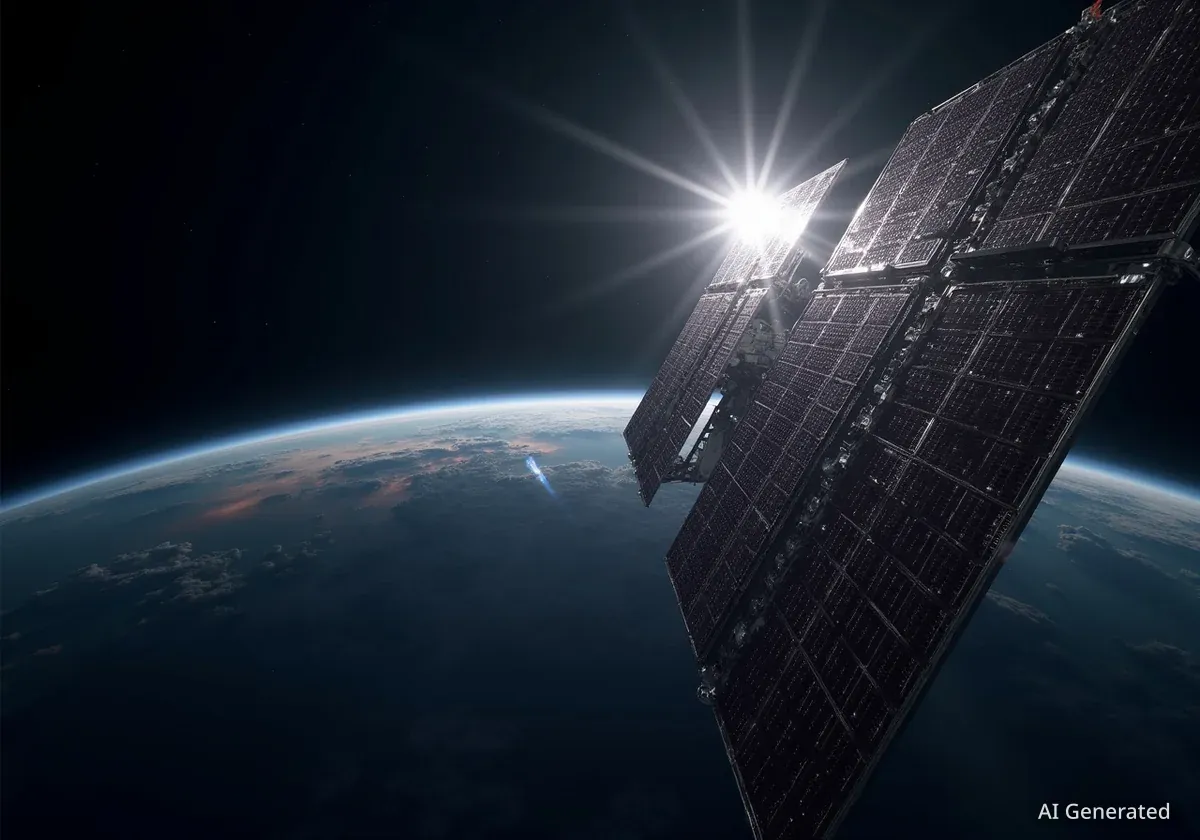The concept of capturing solar energy in space and beaming it to Earth has been a subject of discussion for over half a century, first appearing in science fiction before becoming a serious engineering pursuit. Despite decades of development, the technology remains on the drawing board, facing significant hurdles related to cost, logistics, and environmental impact.
While advocates point to the potential for a continuous, clean energy source that could power the planet for billions of years, critics and space agencies remain cautious. The debate now centers on whether the immense technological challenges and financial investments are justifiable, especially as terrestrial renewable energy sources become more efficient and widespread.
Key Takeaways
- Space-based solar power (SBSP) aims to collect solar energy in orbit, where the sun shines 24/7, and transmit it wirelessly to Earth.
- Proponents argue SBSP could provide a reliable, clean energy source, potentially reducing land use for renewables by up to 80% in regions like Europe.
- Major obstacles include the high cost of launching and assembling massive structures in space, as well as potential greenhouse gas emissions from the manufacturing and launch process.
- Experts are divided on the technology's maturity, with some believing it's the future of energy and others advocating for focusing on terrestrial solutions and energy sufficiency.
- The European Space Agency's (ESA) Solaris program, intended to explore SBSP, has reportedly concluded without advancing to a demonstration mission, highlighting the current cautious approach by major agencies.
The Promise of an Orbiting Power Plant
The idea is straightforward in concept but monumental in execution. It involves constructing vast solar arrays in geostationary orbit, thousands of kilometers above Earth. These satellites would capture sunlight continuously, unhindered by weather, nighttime, or atmospheric filtering. The collected energy would then be converted into microwaves and beamed to receiving stations on the ground, where it would be converted back into electricity and fed into the grid.
Sanjay Vijendran, co-founder and CTO of the European private company TerraSpark, is a firm believer in this vision. He emphasizes the unparalleled reliability of an orbital power source. “If you go up into space where the sun is shining 24/7, you’re able to capture clean energy in a reliable way that is available for the next five billion years,” he explained.
Did You Know?
The concept of a space-based solar power station was first popularized by science fiction writer Isaac Asimov in his 1941 short story "Reason." In the story, a robot operates a station that beams energy throughout the solar system.
This constant availability is a significant advantage over terrestrial solar and wind power, which are intermittent by nature. A 2025 study led by Wei He, a senior lecturer at King’s College London, suggested that a successful space-based solar network could drastically reduce Europe's dependence on land for renewable energy infrastructure by as much as 80 percent.
A Reality Check on Cost and Feasibility
Despite the compelling vision, the path to deploying space-based solar power is fraught with challenges. The primary obstacle has always been cost. A 2024 NASA analysis concluded that the two systems it reviewed were exceptionally expensive. Furthermore, the report raised concerns that the entire lifecycle, from manufacturing components to launching them on rockets, could produce greenhouse gas emissions comparable to existing renewable energy systems on Earth.
The logistics are equally daunting. The process would involve:
- Designing and mass-producing vast quantities of solar panels and transmission components.
- Launching these materials into orbit using numerous heavy-lift rockets.
- Assembling the massive structures in space, likely using advanced robotics.
- Maintaining and operating these complex orbital power plants for decades.
However, optimists like Vijendran point to recent industry trends as a reason for hope. He believes the rise of reusable rockets, pioneered by companies like SpaceX, and the advent of satellite mass-production techniques are fundamentally changing the economic equation. These developments could dramatically lower the cost of launching and building infrastructure in orbit, potentially making space-based solar power economically viable in the coming decades.
A Philosophical and Practical Debate
The discussion around space-based solar power extends beyond mere technical feasibility. Some experts question the fundamental premise of seeking ever-increasing energy sources. Francesco Contino, a professor at UC Louvain in Belgium, suggests a different approach is needed.
“It feels a little bit like a race forward when we should be thinking about slowing down. Going forward together in our society is to look for sufficiency and not to explore new ways to get more and more energy.”
This perspective argues that society should prioritize reducing energy consumption and optimizing existing terrestrial solutions rather than pursuing technologically complex and expensive megaprojects in space. The focus, according to this view, should be on sustainability through conservation, not just through new forms of generation.
The European Space Agency's Solaris Initiative
In late 2022, the European Space Agency (ESA) launched Solaris, a three-year research program to assess the viability of space-based solar power for Europe. The initiative was designed to study the necessary technologies and create a roadmap for a potential demonstration mission. It was met with significant public and media interest.
Even those who see potential in the technology acknowledge the risks. Wei He, while highlighting the benefits in his study, also noted that there is “a lot of risk around the long-term return” on such a massive investment. The technology, he believes, has great potential but is far from a guaranteed success.
The Quiet End of a High-Profile Program
The cautious sentiment appears to be shared by major institutional players. The ESA's Solaris program, which Vijendran helped lead, was intended to pave the way for Europe's decision on pursuing the technology. However, the program seems to have concluded without moving forward to the next stage.
According to Vijendran, the agency's assessment was that “the technologies were still relatively immature for moving already to the next step of a demonstration mission.” He explained that the decision was made to continue foundational technology development rather than commit to the ambitious demonstration mission originally envisioned for Solaris.
The program reportedly ended around August 2024. This quiet conclusion, without a major public announcement of a follow-on mission, suggests that while the dream of space-based solar power is alive in the private sector and research labs, government agencies are taking a more measured, step-by-step approach. For now, the concept of harnessing the sun's power from orbit remains a tantalizing vision for the future, one that is still waiting for technology, economics, and policy to align.





